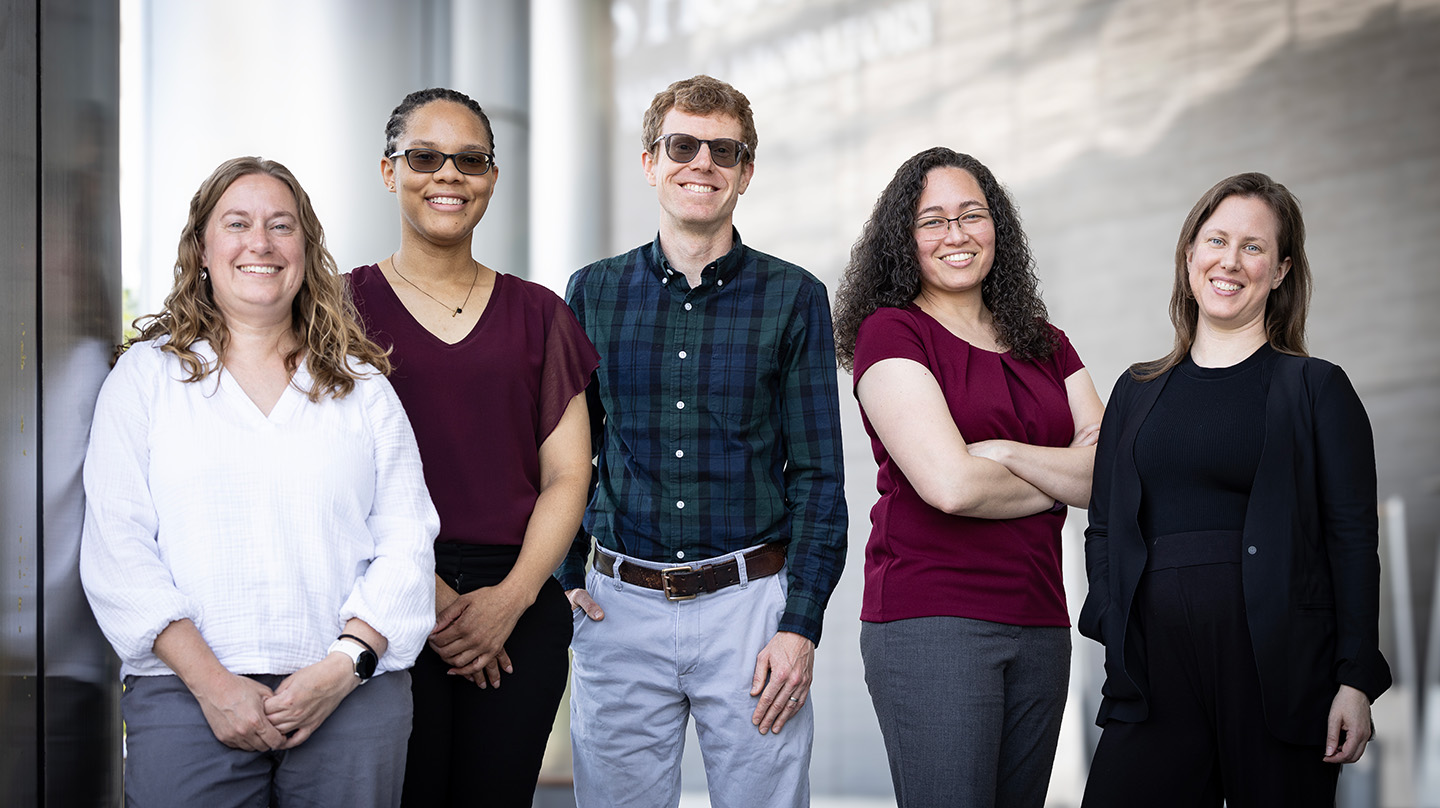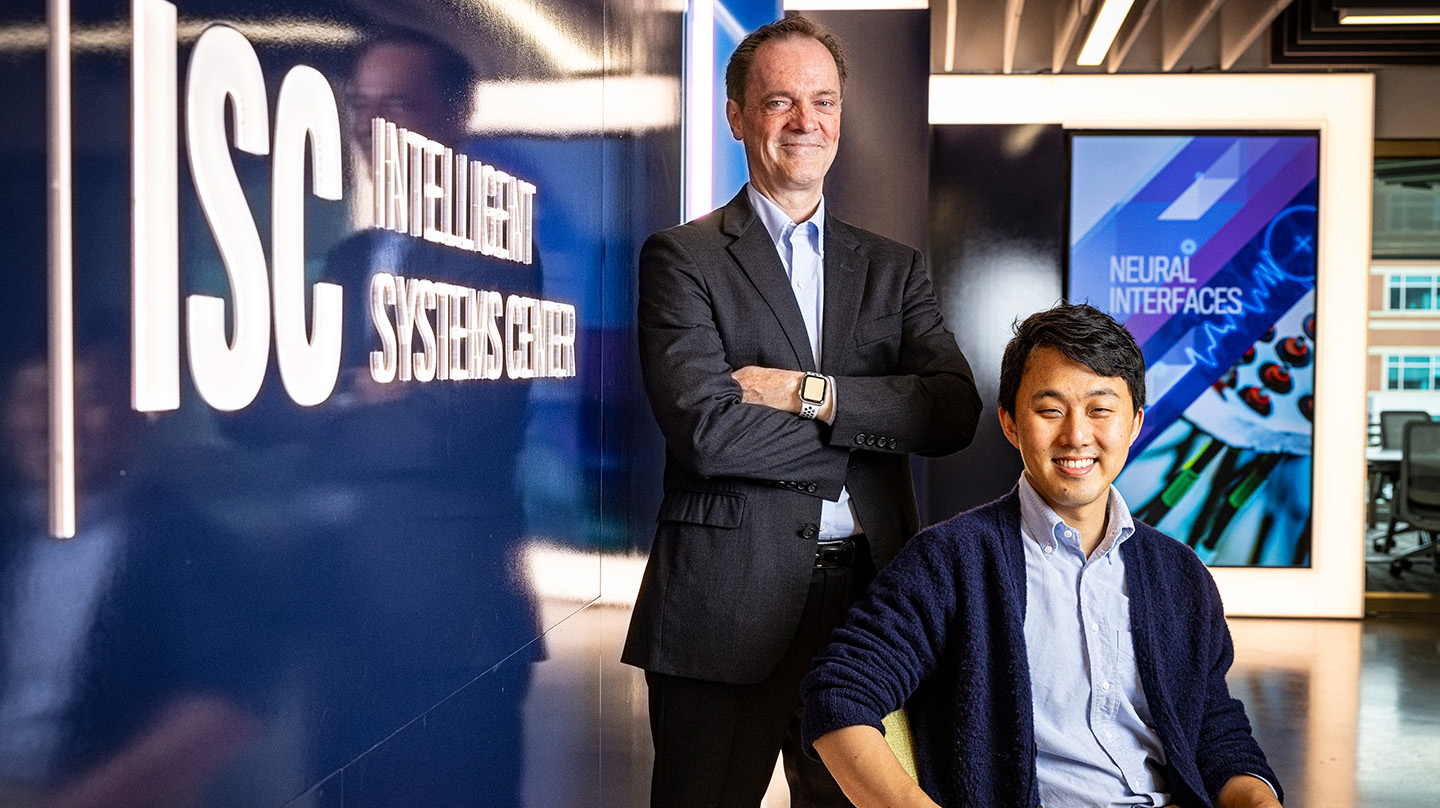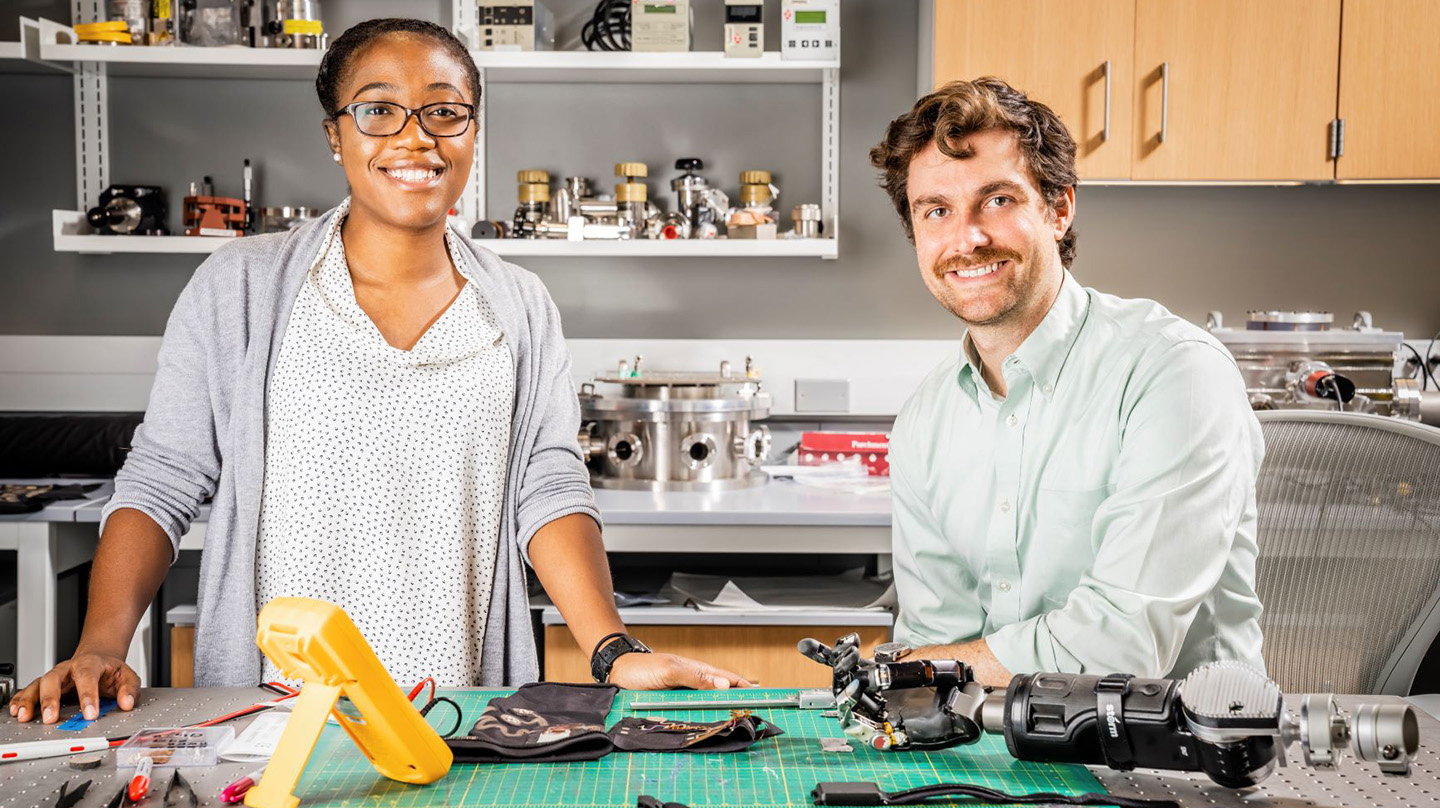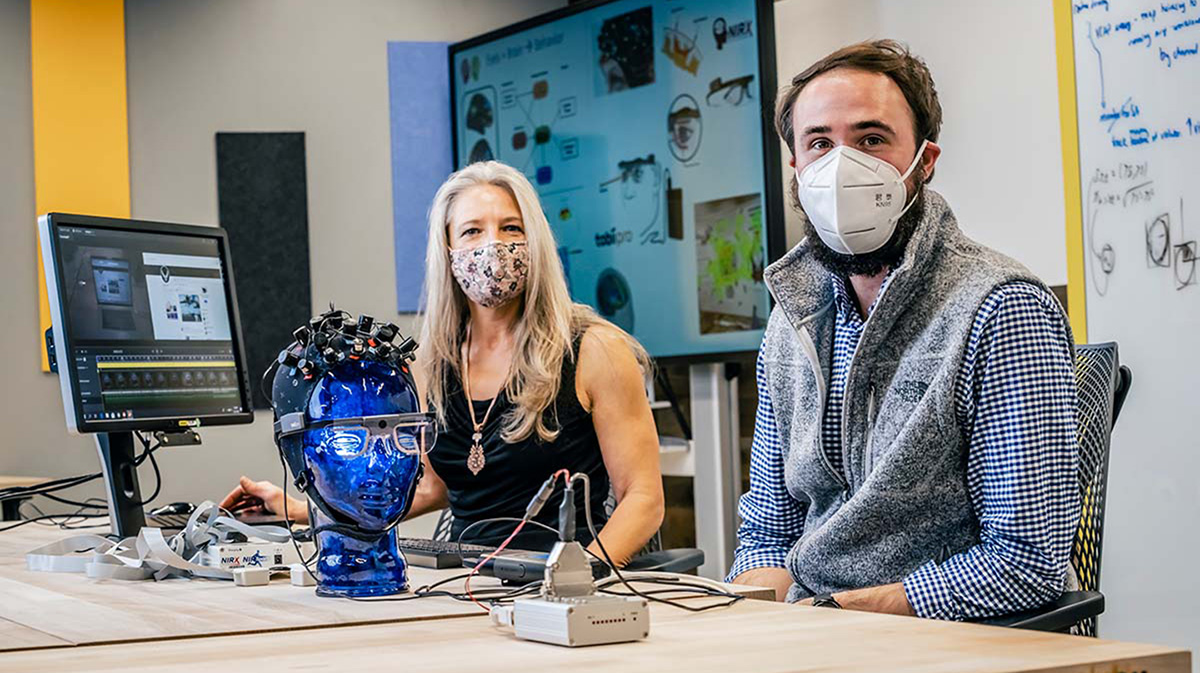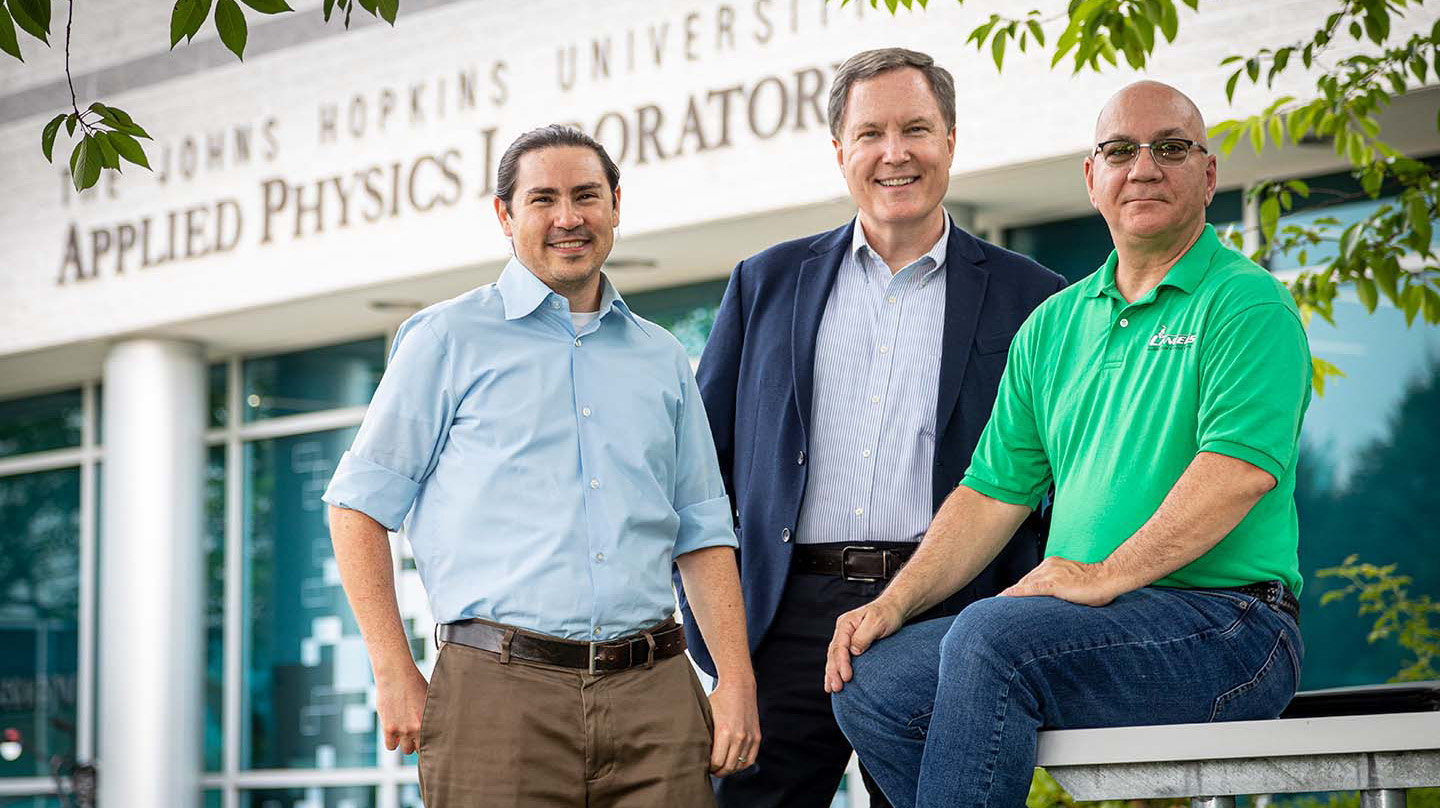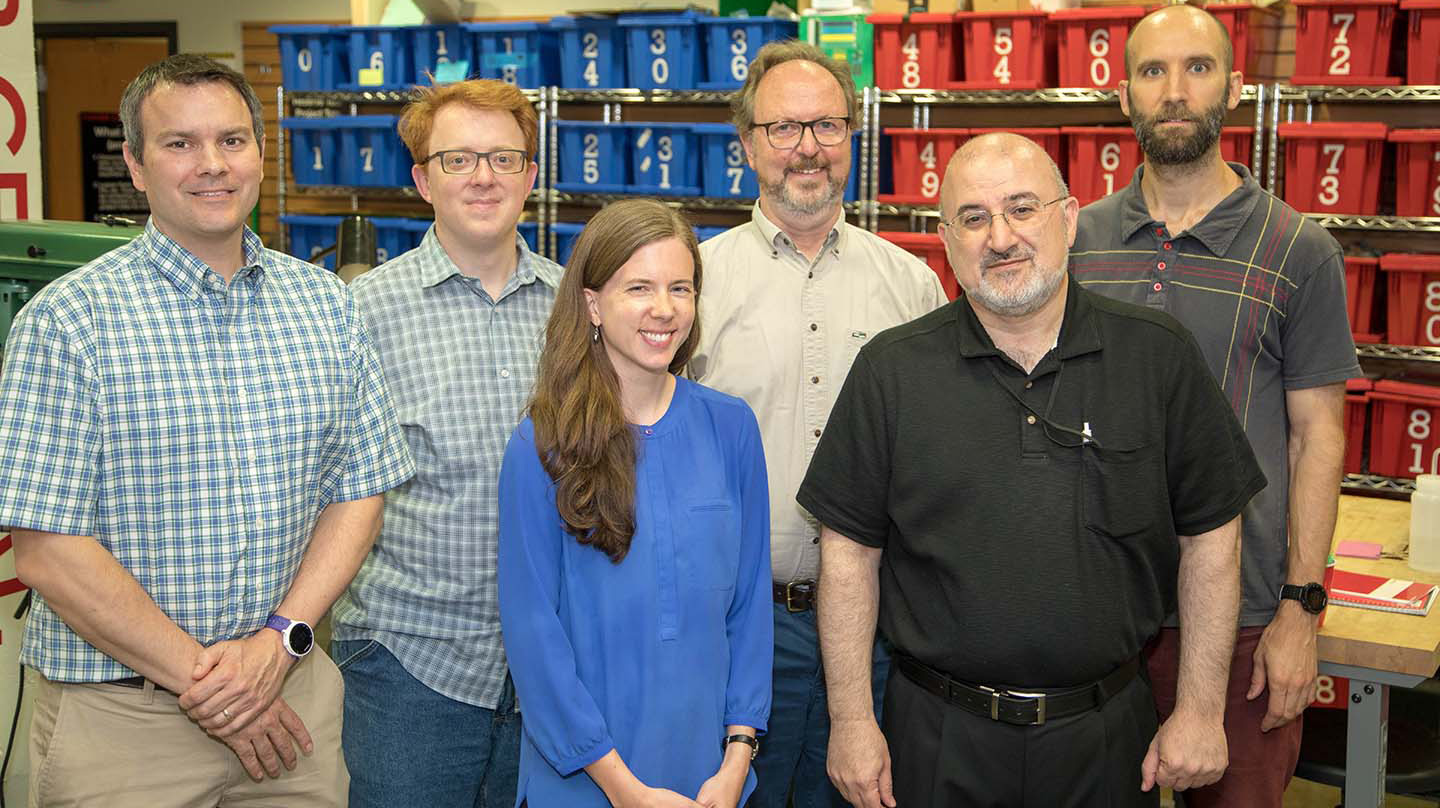Press Release
Johns Hopkins APL Researchers Drive Innovation in 2024 JHU Discovery Awards
Seven teams receiving funding under the Johns Hopkins University’s 2024 Discovery Awards tap into the technical expertise of scientists and engineers from the Johns Hopkins Applied Physics Laboratory (APL), in Laurel, Maryland.
Johns Hopkins University (JHU) launched the Discovery Awards program in 2015 to encourage cross-university collaborations that lead to impactful work. Teams include members from at least two schools or affiliates of the university. The 44 winning project teams, chosen by faculty members from 286 proposals, feature individuals representing 11 Johns Hopkins entities.
APL researchers lead four of these projects, which will investigate adapting U.S. infrastructure to climate change, using deep learning to model biological systems, creating coastal resilience solutions for Baltimore and developing new DNA-based materials for 3D bioprinting. Three other projects draw on APL expertise in artificial intelligence, materials science and signal processing.
Tackling Climate Resilience for Coastal Infrastructure
APL engineer Marisel Villafañe-Delgado leads a team of seven researchers from APL and the JHU Whiting School of Engineering on Infrastructure Climate Adaptation/Resiliency in the U.S. (ICARUS), a project to improve how we predict and prepare for climate impacts on critical infrastructure.
The ICARUS project focuses on making climate models more precise, particularly for coastal areas like the Baltimore-Washington region. “These regions face unique challenges because of their proximity to large bodies of water and dense urban environments, which can significantly affect local weather patterns,” Villafane-Delgado explained. “By using advanced machine-learning techniques combined with physics-based rules, we plan to refine large-scale climate data to provide detailed, local predictions.”
For instance, the team aims to predict how specific weather events, like heat waves or heavy rainfall, will impact local infrastructure. This enhanced data will help urban planners and policymakers better understand and address the effects of climate change on essential services like power grids, water supply and transportation systems, ensuring these systems remain resilient in the face of changing climate conditions.
This project — co-funded with the Ralph O’Connor Sustainable Energy Institute — includes APL staff members Rebecca Eager, Krista Rand, Jared Markowitz and Valerie Washington.
Fortifying Baltimore’s Coastline Against Climate Change
Baltimore’s coastal areas face significant challenges from sea level rise, flooding and storm surges, making them increasingly vulnerable to climate change. APL biomaterials engineer Jennifer Boothby leads a project to fortify the Baltimore-area coastline against these threats. The team aims to mitigate shoreline erosion and polluted runoff by synthesizing biopolymers to build soil cohesion and support ecosystem restoration, addressing both environmental and community vulnerabilities.
“The Baltimore area is significantly exposed to the impacts of climate change,” Boothby said. “Our work is crucial in developing adaptive solutions to protect disadvantaged communities from the catastrophic effects of increased flooding and storm surges.”
The team, which includes regional climate scientist Ben Zaitchik, from the Johns Hopkins School of Earth and Planetary Sciences, and coastal engineer Chris Overcash, from the Whiting School, has expertise in biocompatible polymer solutions, climate event simulation and nature-based solutions to tackle these pressing issues.
This initiative builds on APL’s work in coastal resilience, Boothby said. “This initiative not only represents a significant step in coastal resilience but also exemplifies the power of interdisciplinary collaboration,” she said. “By combining our strengths, we can develop innovative solutions that safeguard our communities and ecosystems against the growing threat of climate change.”
Revolutionizing Injury Prediction and Treatment for Military Personnel
APL computational engineers Michael Lapera and Melissa Yates will work with Whiting School researchers on a project to better predict, prevent and treat traumatic injuries to military personnel and civilians in war zones.
The project combines physics-based modeling with advanced machine learning to simulate human tissue responses more accurately and efficiently. By creating surrogate models with deep neural networks, the team aims to speed up simulations while maintaining model fidelity and resolution, using powerful computing clusters at APL and JHU and open-source machine-learning libraries.
“This project allows us to explore new mathematical approaches to understanding tissue injury,” said Yates. “By integrating machine learning with traditional modeling, we can create more detailed and efficient simulations, ultimately improving treatment and prevention strategies.”
This work is co-funded by the Data Science and AI Institute.
Advancing 3D Bioprinting with DNA Bioinks
APL’s Angelo Cangialosi, a chemical and biomolecular engineer, is spearheading a project to develop DNA-based bioinks for next-generation 3D bioprinting. Bioinks are materials used in 3D bioprinting to create complex tissue structures by providing a scaffold that supports cell growth. Conducted with Rebecca Schulman from the Whiting School, this research seeks to revolutionize bioprinting by creating biocompatible, mechanically robust hydrogels.
This work addresses the limitations of 3D bioprinting materials, which often struggle to balance fluidity and structural integrity while maintaining a conducive environment for cell growth. The team plans to synthesize bioinks using DNA nanotechnology, leveraging the natural programmability of DNA to create interlocked DNA structures like catenanes and rotaxanes. These structures will enhance the mechanical properties of hydrogels, making them more suitable for precise, high-resolution bioprinting.
“This work has the potential to transform the field of bioprinting by providing materials that are both biocompatible and mechanically resilient,” said Cangialosi. “By using DNA-based interactions, we can create bioinks that better mimic the complex behaviors of natural tissues, leading to significant advancements in medical implants, biosensors and other bioprinted devices.”
Leveraging Advanced AI for Eye Care for Underserved Populations
Biomedical engineer Nathanael Kuo and computer vision engineer Rai Munoz are working on two projects that will leverage advanced technology to improve eye care among underserved populations.
The first effort, led by Kunal Parikh from the School of Medicine, aims to develop a low-cost, smartphone-based tool to diagnose and classify cataracts, making eye care more accessible in low- and middle-income countries. Kuo will lead the development of deep-learning models to detect and classify cataracts, while Munoz will focus on optimizing these models for deployment on smartphones.
Nakul Shekhawat from the School of Medicine is spearheading the second project, to develop a method to diagnose corneal infections using smartphone-based microscopy and artificial intelligence. Kuo will lead the development of deep-learning models to identify infection subtypes from microscope images, while Munoz will optimize these models for deployment on low-cost smartphones.
APL Advances Noninvasive Cardiac Monitoring
Current methods for measuring cardiovascular function in critical care units are often invasive or subjective. APL’s David Blodgett and Nikki Steiner are contributing their expertise in imaging systems and signal processing to a project led by Austen Lefebvre at the School of Medicine to adapt a noninvasive imaging technique, originally developed by APL for neural activity detection under DARPA’s Next-Generation Nonsurgical Neurotechnology program, to measure cardiac function within an extracorporeal membrane oxygenation model.
This method focuses on providing accurate, continuous and noninvasive cardiovascular monitoring through optical recording of tissue deformation, potentially transforming patient care by enabling real-time clinical decisions both within and beyond critical care units.
